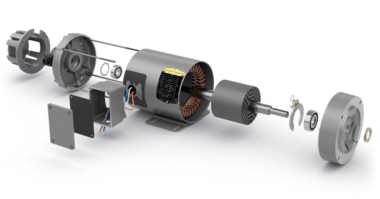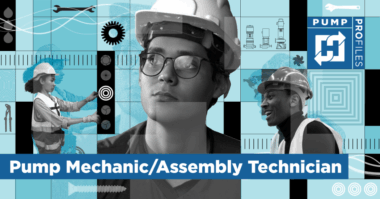Author: William C. Livoti
A motor failure / burnout produces two alternatives: (1) rewind the failed motor or (2) purchase a replacement motor. Re-wind versus replace depends on such variables as the re-wind cost, expected rewind loss, energy-efficient motor purchase price, motor horsepower and efficiency, load factor, annual operating hours, electricity price, and simple payback criteria.
At least some of the time, re-winding will be the best decision. The prospects for a good re-wind are greatly improved if you keep good records on your motors and provide them to the repair shop. Repair shops often cannot get complete specifications from manufacturers. The repair shop must “reverse engineer” motors, counting winding turns, noting slot patterns, measuring wire size, etc. before removing old windings.
Sometimes a motor has failed repeatedly in the past because of a previous non-standard re-wind. The same error can be repeated unless the shop knows the motor is a “repeat offender” and diagnoses the problem. Similarly, a motor is sometimes subjected to unusual service requirements, e.g., frequent starts, dirty environment, low voltage.
Motor efficiency losses after re-winds also vary considerably. While dynamometer tests conducted by the Electrical Apparatus Service Association indicate that new motors, when properly stripped and re-wound, can be restored to their original efficiency, field tests on motors from a variety of manufacturing plants indicate that losses are typically higher in motors that have been re-wound-perhaps because of thermal shock suffered during the motor failure.
An analysis of core loss tests taken over a 1-year period in General Electric repair facilities indicates that average core losses are 32 percent higher than normal for motors that had been previously re-wound. General Electric also conducted a test of 27 re-wound motors in the 3- to 150-hp size range. The test indicates that total losses increased by 18 percent for motors that have been re-wound compared to those that have not been re-wound.
Did you know an 18 percent increase in losses corresponds to an approximate 1.5 to 2.5 percent decrease in full-load efficiency?
Do you have a repair specification for your induction motors?
Do you have a vendor qualification criterion for your motor repair shops?
Do you audit your motor repair vendors?
Do you perform vendor surveillance for your motor repairs?
Over the next few months, I will be addressing all of these questions and more in an effort to provide the End User with sufficient information and “tools” to insure they receive the best possible motor repair from their local shop or major chain repair company.




